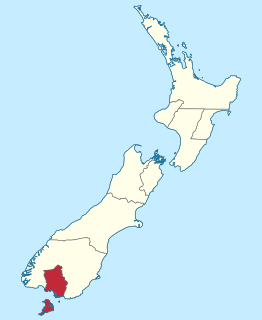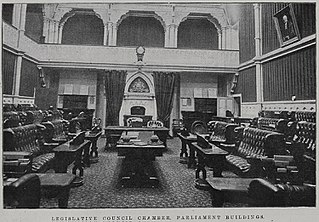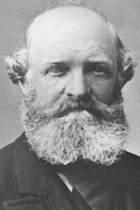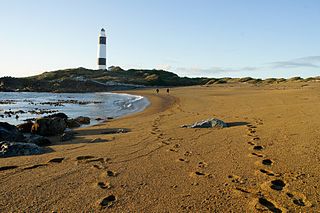James Alexander Robertson Menzies (21 February 1821 – 18 August 1888) was the first Superintendent of the Southland Province in New Zealand from 3 August 1861 to November 1864 during its breakaway from Otago Province (1861 to 1870). [1] He continued serving on the Provincial Council after his superintendency ended. [2]
Superintendent was the elected head of each Provincial Council in New Zealand from 1853 to 1876.

The Southland Province was a province of New Zealand from March 1861, when it split from Otago Province, until 1870, when it rejoined Otago.

New Zealand is a sovereign island country in the southwestern Pacific Ocean. The country geographically comprises two main landmasses—the North Island, and the South Island —and around 600 smaller islands. New Zealand is situated some 2,000 kilometres (1,200 mi) east of Australia across the Tasman Sea and roughly 1,000 kilometres (600 mi) south of the Pacific island areas of New Caledonia, Fiji, and Tonga. Because of its remoteness, it was one of the last lands to be settled by humans. During its long period of isolation, New Zealand developed a distinct biodiversity of animal, fungal, and plant life. The country's varied topography and its sharp mountain peaks, such as the Southern Alps, owe much to the tectonic uplift of land and volcanic eruptions. New Zealand's capital city is Wellington, while its most populous city is Auckland.
During his tenure as Superintendent, two railways projects were undertaken, a railway to link Invercargill to the port at Bluff and a wooden railway to Winton. The former is now known as the Bluff Branch, while the latter was upgraded to the standards of a normal railway and extended to ultimately form the Kingston Branch. [1]

Invercargill is the southernmost and westernmost city in New Zealand, and one of the southernmost cities in the world. It is the commercial centre of the Southland region. The city lies in the heart of the wide expanse of the Southland Plains on the Oreti or New River some 18 km north of Bluff, which is the southernmost town in the South Island. It sits amid rich farmland that is bordered by large areas of conservation land and marine reserves, including Fiordland National Park covering the south-west corner of the South Island and the Catlins coastal region.

Bluff, previously known as Campbelltown and often referred to as "The Bluff", is a town and seaport in the Southland region, on the southern coast of the South Island of New Zealand. It is the southernmost town in mainland New Zealand and, despite Slope Point and Stewart Island being further south, Bluff is colloquially used to refer to the southern extremity of the country. According to the 2006 census, the resident population was 1,850, a decrease of 85 since 2001.

Wagonways consisted of the horses, equipment and tracks used for hauling wagons, which preceded steam-powered railways. The terms plateway, tramway and dramway were used. The advantage of wagonways was that far bigger loads could be transported with the same power.
He served on the Legislative Council for 30 years, from 1858 until his death in 1888, and promoted the interests of Southland. [1]

The Legislative Council of New Zealand existed from 1841 until 1951. When New Zealand became a colony in 1841 the Legislative Council was established as the country's first legislature; it was reconstituted as the upper house of a bicameral legislature when New Zealand became self-governing in 1852.









